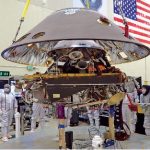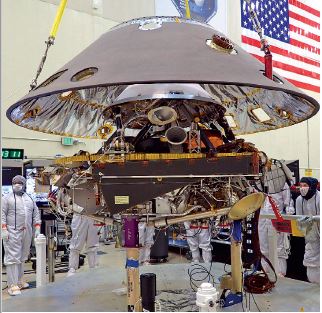U.S. Space Workforce
Official U.S. Workforce Statistics
2019 TSRQ1 – Workforce: U.S. Space Workforce


The global space industry employs hundreds of thousands of highly-skilled individuals to design, produce, and operate cutting-edge technology. This workforce, in turn, contributes to thriving local economies, with clusters of innovative companies and service support industries. Understanding trends . . .
2014 – U.S. Space Industry Salaries
The space industry is well known for its highly paid workforce, which generally provides salaries above the average even among science and engineering jobs. In 2013, the average salary in the U.S. civilian space workforce was $##, more than double the average private sector salary. The highest-paying sector, Guided Missile and Space Vehicle Manufacturing, had an average salary of nearly $##.
2013 – U.S. Space Industry Salaries
Given the requirements for advanced skills and education, it is not surprising that space sector jobs command high salaries. In 2012, the average space sector salary was about $##, more than double the average private sector salary of $##. It is also greater than the average annual salary for STEM occupations.
2012 – U.S. Space Industry Salaries
The space workforce consistently commands high average annual salaries; in 2012 the average space salary was $##. These high salaries reflect, in part, the fact that space jobs often require advanced skills and high levels of educational attainment.
2012 – Official U.S. Workforce Statistics
The U.S. space workforce declined by ##% from 2010 to 2011, continuing a five-year trend of annual decreases, with the total now approximately ##% below the average employment level from 2001 to 2011. NASA’s civil service workforce remained relatively steady. Layoffs related to the end of the Space Shuttle program continued to affect former shuttle contractors through 2012, although there were signs of recovery in some space-centric regions by the end of the year.
2011 – U.S. Space Industry Salaries Snapshot
Space salaries have increased even as U.S. space employment has declined. In 2010, the combined average salary across the six core U.S. space industry sectors was $##. This was more than double the average 2010 U.S. private-sector salary of $##, reflecting the tendency of space jobs to require high levels of technical education and training that can generate high-value products and services.
2010 – Official U.S. Workforce Statistics – Snapshot
Another issue facing the U.S. space industry is the demographic challenge associated with the retirement of veteran space employees and the entry of a new workforce. As shown in the exhibit NASA Civil Servant Workforce Age Profiles Over Time, the NASA workforce is concentrated in an age band from 45 to 54 years of age.
2010 – U.S. Space Industry Salaries – Snapshot
In 2009, the average salary across the six core U.S. space industry sectors was $##. This was more than double the average private-sector salary of $##. The gap between space and general private-sector wages is even more pronounced within certain industry sectors. In 2009, professionals in two of the six space sectors analyzed earned an average salary in excess of six figures.
2009 – Official U.S. Workforce Statistics – Snapshot
In light of the ongoing conversation in the American space community about ensuring a long-term human capital supply, The Space Report 2010 identifies ## occupations important to sustaining space-relevant skill sets in the United States, and assembles data on them from the Bureau of Labor Statistics. While many of the people in these occupational categories work in industries other than space, together they comprise a key part of the labor pool from which space workers are drawn.
2009 – U.S. Space Industry Salaries – Snapshot
Space industry jobs stimulate the overall economy more than most other jobs because they offer higher salaries on average. Higher salaries provide professionals with more discretionary income to consume goods and services or reinvest in the larger economy. They also foster a larger tax base with which to make public investments.